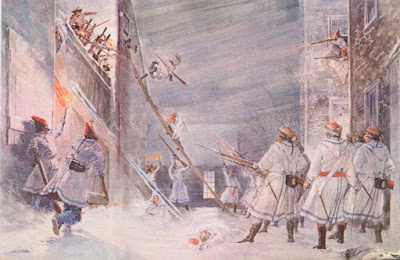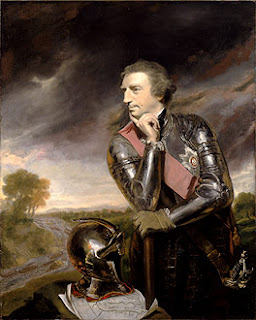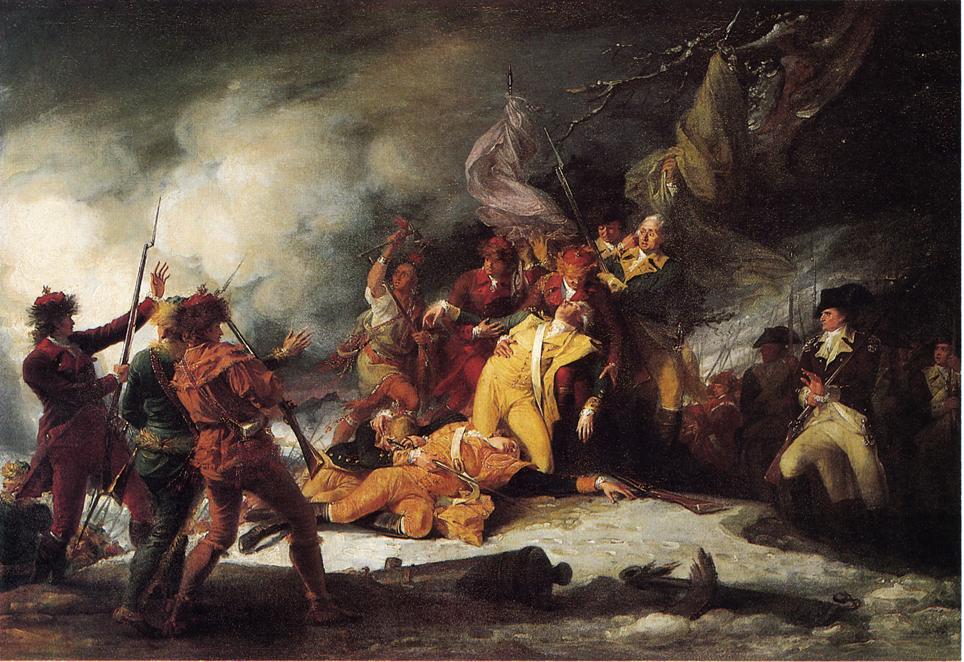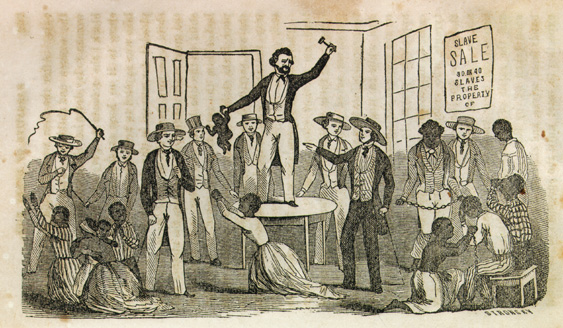by Danielle Funiciello
DISCLAIMER: This article
features discussion about nudity and exposure in drawings and paintings. No nudity
is shown within the article (except through a link which is marked), but language regarding the female form is used,
and may not be comfortable for young or sensitive readers.
Until
the social movements of the 1960s hit the museum world in the 1970s, there were
a lot of problems with interpretation of female historical figures. One might
argue that there are still a lot of problems with interpretation of female
historic figures, though things are generally moving in the right direction.
The age old excuse has been that there are not enough sources about women, and
that this problem is upon us since women were not considered historically
relevant in their own time, and so sources were not saved. Documentation about
women is sometimes hard to come by,
especially when it comes to ladies of lower classes, and the enslaved. There
are two things, however, in women’s history of which there is no shortage: images and myths. There are so many myths
about women in the 18th Century, that today we will only be focusing
on a few that relate to misconceptions about historical modesty, but we will be
using lots of images to address these myths!
The Myth: 18th
Century people were more sexually repressed and modestly dressed that modern
people. It was scandalous for women to show their ankles or elbows in public
because those were sexualized body parts – that is why women wore long skirts
and ¾ or full sleeve gowns. Low-cut dresses were also risqué.
Given our modern concept of body and sexuality, we have very
set notions about what is and is not appropriate and, because most of us are
taught that our history begins with religious settlers like the Pilgrims, we
tend to imagine that all Colonists were more prudish than we are. In actuality,
outside of actual Puritans (and other conservative religious groups), the
Colonial era was not very puritanical. As an example, up to one third of
Colonial women went to the alter pregnant, depending on the colony.
Furthermore, sexualization of individual body parts is as
different from century to century as it is from culture to culture. Much of
what we now think of as the strict repression of “the past” (the first sign
that a historical myth is misplaced is when the time period in question is vague)
became set during the Victorian era (1837-1901).
 |
| A "Robe a la Turque" on a self-portrait of Rose-Adelaide Ducreux, which clearly shows her elbow exposed as she bends to play the harp. |
Similarly, the myth that women’s elbows had to be covered to
avoid offending delicate sensibilities stems from observation of fashion tastes
rather than any 18th-Century letters, drawings, or documents that
discuss the attractiveness of the elbow or the scandal of the elbow being
exposed. Three quarter sleeve dresses were
quite popular in the mid to late 18th-Century, and while many such
sleeves would have covered the elbow, many did so just barely, such that any
bending of the arm would have exposed the elbow. It is true that there were not
many short sleeved styles and that even if one wore a short sleeved dress, it was
typically worn over a shift with full or ¾ sleeves.
There are two likely explanations for these styles. The
first is that the linen shift undergarment was worn as an absorbent layer to
remove oils and dirt from skin and protect the expensive outer garments from damage
inflicted by the human body. It would not have been functional in this job if
the shift sleeve was shorter than the gown sleeve allowing the skin to touch
the outer garment. The second explanation for the style is that longer sleeves
meant more fabric and more fabric meant more money. Short sleeves could be seen
as skimping on fabric costs, but longer sleeves showed off one’s wealth.
Layering sleeve lengths so that one could see the edge of the shift showed off even more fabric and thereby more wealth. Full length sleeves made of fine materials showed off one’s wealth even more, but restricted arm movement making it difficult to do any labor or,
for that matter, leisure activities. The style became popular because many
women chose the comfort of arm mobility but, among the wealthy, could use lace
cuffs, ruffles, ribbons, and other costly adornments to suggest that the
shortened sleeve was not an issue of money.
 |
| Catharine Van Rensselaer Schuyler by Thomas McIllworth |
Today’s article was prompted by a very frequent visitor reaction
to portraits of Catharine Van Rensselaer Schuyler and her daughter Cornelia
Schuyler Malcolm. It usually sounds something like this: “I can’t believe she’s
wearing such a low cut dress! In that time period?!”
This is where our perceptions of what is, and what is not a
sexualized body part come into play. More importantly, how body parts were considered sexual or vulgar has changed
significantly. The upper chest, neck, and shoulders - the area referred to as décolletage,
was considered a beautiful, but not overtly sexual area of the female body.
Where we now consider too much exposed cleavage to be inappropriate, men and
women of the 18th-Century did not seem to think much of the swell of
the chest. France in the 1790s took this to the extreme with fashions that
allowed the breast to swell over the top of the gown. These gowns were shown in
numerous fashion plates which were not intended as parody or pornography. [DISCLAIMER: Some of these fashions
plates, which do contain illustrations
of nudity, can be seen on this blog. The link is provided only as a location to
see these images in a centralized place. Schuyler Mansion is not affiliated
with this blog and the interpretations made by EKDuncan’s blog are not
representative of the arguments made in this article.]
 |
| Cornelia Schuyler Morton by Thomas Sully - on display at Schuyler Mansion. |
The French captions under each drawing describe only the
style and features of the dresses. They make no mention of the exposure caused
by these gowns, implying that the low-cut nature was not necessarily expected
to shock or offend the viewer. This was another way of displaying one’s wealth.
After all, a dress which can so easily slip off the wearer is not designed for
rigorous activity. It could only be worn by someone who had no need to perform
labor. This would also explain why this extreme fashion never takes foot in the
Americas – even wealthy women like Catharine Schuyler, who owned slaves to do the
bulk of the labor, still had more hands-on responsibilities than women in the
high-courts of France.
 |
| "The Inconvenience of Dress", published by S.W. Fores, which mocks the preferred female shape created by fashion trends. |
Strangely, more lewdness was implied in parody images of
women wearing too much clothing than none at all. Things like paniers, bum
rolls, and layered petticoats which, to the modern eye, cover and obscure the
human figure, were considered suggestive to the point of vulgarity by some in
the 18th-Century. Back in the arena of décolletage; fichu - square
or triangular scarves which were tucked around the neck and into the front of
the gown) - are often considered modesty pieces by modern people. However, if
worn in excessive layers – as became popular in the 1780s and 90s - they too
were seen as being suggestive and showy; the 18th-Century equivalent
of bra-stuffing, perhaps? The fichu was more about comfort of movement and
display of fabric as, you guessed it, a symbol of one’s wealth.
 |
| Catharine Van Cortlandt Van Rensselaer. Compare to Catharine Schuyler's portrait, above. |
An additional point of interest regarding Catharine’s portrait,
is that it is very likely that the body shown is not Catharine’s Schuyler’s at
all. The dress was certainly not hers, as it appears on a number of other women
at the time, painted by a number of different artists. This includes Catharine’s
younger cousin, Catharine Van Cortlandt Van Rensselaer who is shown so
identically to Catharine Schuyler, that the artist, did not even change the
folds in her sleeve. In all likelihood, sketches for the body of the portrait
were made from a model wearing a false gown which the artist kept in his studio
– this would allow him to paint accurately draped fabric from life. The
features of the dress were then painted in in mimic of another portrait,
probably one of someone that Catharine wanted to emulate. This process meant
that Catharine only had to pose briefly, so that the artist could make a sketch
of her face from life, but the rest of the painting could be done from the
artist’s studio, saving time and money.
The fact that the body shown was not Catharine’s was not a
secret. People looking at the portrait within the time period would have
understood the painting process. Thereby, even if Catharine would not have been
comfortable showing this much skin during her daily life, she hardly had reason
to be embarrassed by someone else’s body with her head slapped on top.
We have a lot more images and myths regarding women in the
18th-Century, so check back to the blog often if you liked this
article. Additionally, since 2017 is not only the 100th Anniversary
of Schuyler Mansion’s opening, but also of women’s suffrage, we are pleased to
announce that a program on the “Women of Schuyler Mansion” will be available
both as an outreach program, and as a focus tour of the museum during the 2017
season. Further details will be available on Facebook by May 17th,
the first day of our open season.











